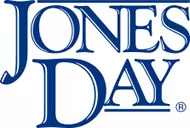- within Criminal Law topic(s)
In Apple, Inc. v. Parus Holdings, Inc. (IPR2020-00686), the PTAB denied the Patent Owner's motion to exclude portions of the Petitioner's supplemental expert declaration. Here the Patent Owner sought to exclude a number of paragraphs of the supplemental declaration because the testimony: 1) did not respond to arguments raised in the Patent Owner Response; 2) was an unauthorized late submission; and 3) was improperly incorporated by reference into the reply. The PTAB agreed with the Petitioner that Patent Owner's motion to exclude was improper and that Patent Owner should have filed a motion to strike instead.
In denying the motion, the PTAB made clear that motions to exclude should be used when a party is raising arguments about the admissibility of any evidence under the Federal Rules of Evidence. In its decision, the PTAB pointed to 37 C.F.R. § 42.64 and the Trial Practice Guide which states that "[a] motion to exclude must explain why the evidence is not admissible (e.g., relevance or hearsay) but may not be used to challenge the sufficiency of the evidence to prove a particular fact."). Specifically, a motion to exclude is not the appropriate vehicle for parties seeking to exclude evidence that exceeds the proper scope of the reply or sur-reply. Arguments concerning the scope of the evidence, as here, must be raised in a motion to strike.
Takeaway
While the PTAB case law on this procedural point is not 100% consistent, this most recent example again reinforces that challenges to improper scope of evidence and arguments submitted late in PTAB trials should be made via a motion to strike, where complaints based on violations of rules of evidence should be addressed in motions to exclude.
The content of this article is intended to provide a general guide to the subject matter. Specialist advice should be sought about your specific circumstances.



